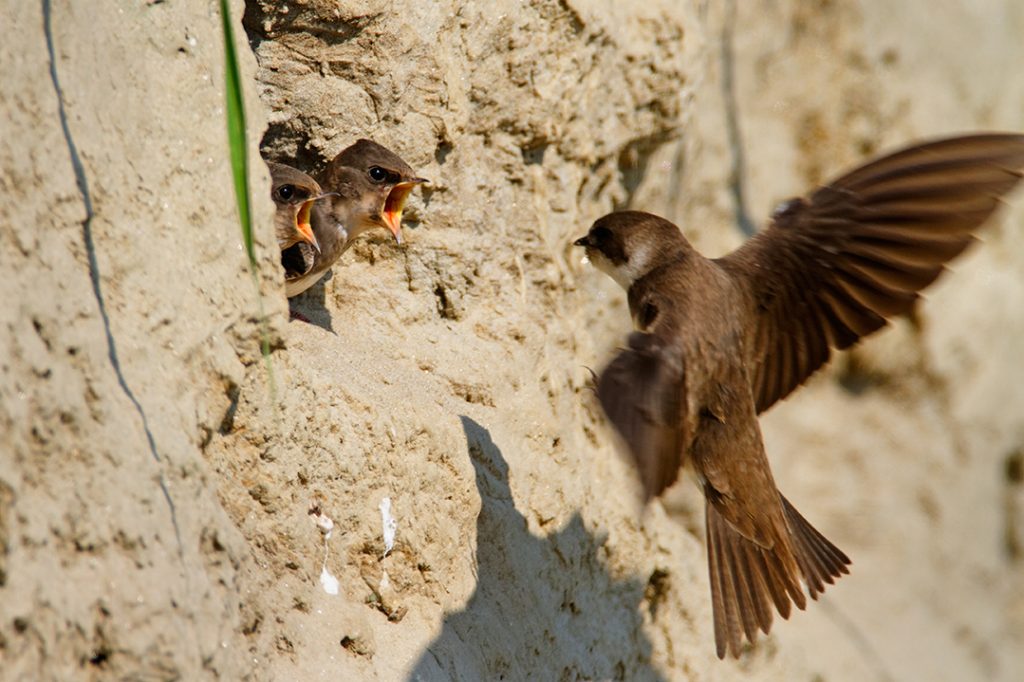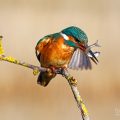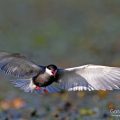Steep eroded banks
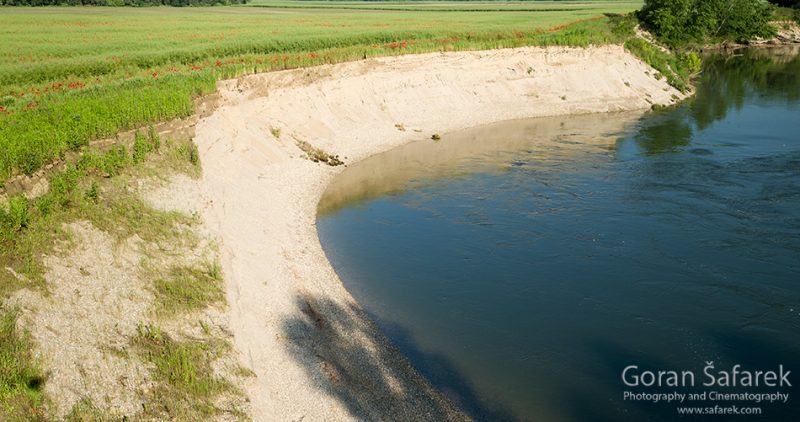
Steep banks of the river are extreme habitat, where some very specialized animals and plants live. They are mostly created by river erosion.
Some species have adapted to the barren and steep banks that were formed by river erosion. Mostly, these are hardened mud or sandbanks that don’t weather much. Due to the steepness, they are inaccessible to many predators. Birds excavate long burrows through a loose soil with the nesting chamber at the end. In Europe, one such birds are the Kingfisher (Alcedo athis) that digs the holes up to one meter long. This short-legged bird with a long and pointed beak is adorned with beautiful iridescent plumage of blue and chestnut-red feathers. The kingfisher is an excellent fisherman and lives near water.
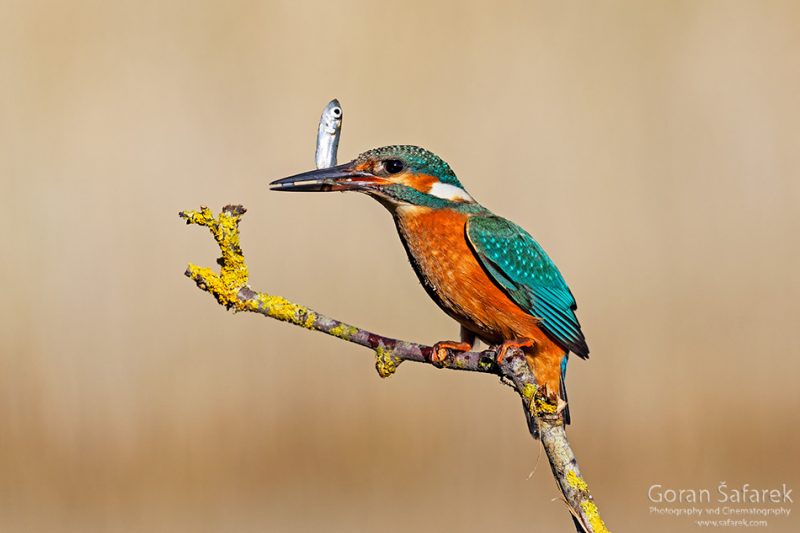
Steep banks are also habitat for the sand martin (Riparia riparia), a highly social bird. It nests in large colonies with hundreds, even thousands of pairs. The sand martins are similar to swallows, but with brown plumage and shorter wings and tail. During the peak of the nesting season, there is much traffic around the colony – birds hunting around, landing and taking off from the nests. The sand martin feeds almost exclusively on insects caught in flight. This species has a fast flight, with distinctive shallow, fluttery wing beats.
Not so numerous, but also a social species is the European Bee-eater (Merops apisater). It has a long and slightly curved beak, turquoise belly and chest, rich chestnut crown that blends into gold on its back. Bee-eaters excavate nests too, sometimes 3 meters long. Even if we don’t see the birds themselves, we can easily recognize them by sound: „prirr“ or „krik krik“.
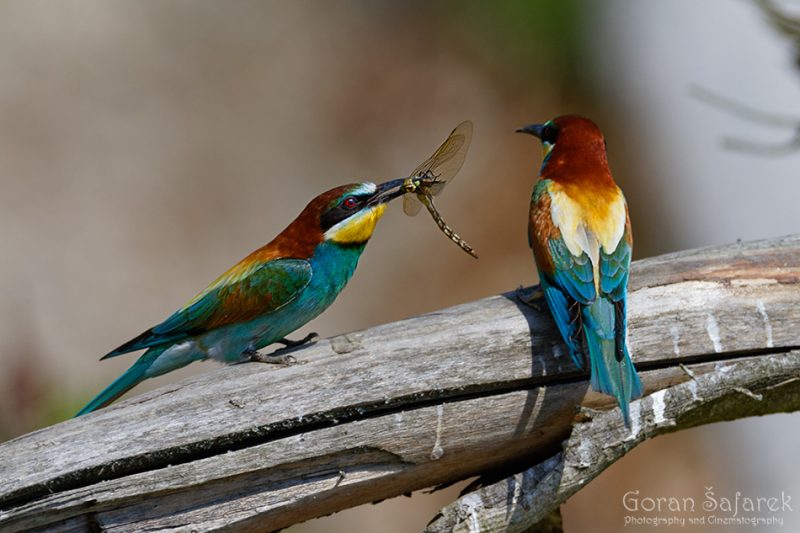
The river is continuously eroding the banks so these nesting sites are not permanent. As plants colonize the banks, they become less suitable nesting habitat. Also, old nests accumulate parasites. Birds, therefore, look for new, freshly eroded river banks created by the river erosion and natural dynamics in general.
